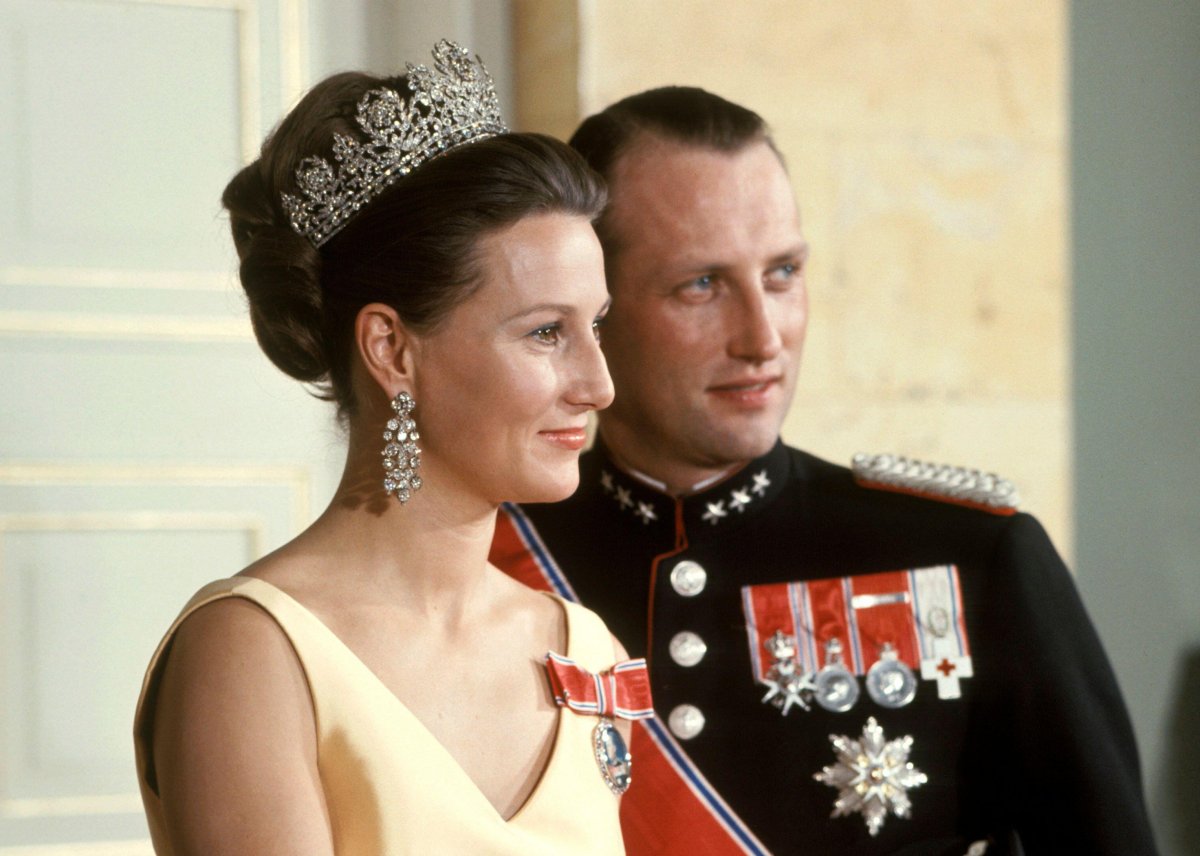
Today, the Queen of Norway celebrates her birthday. To mark the occasion, I’ve got a fascinating survey of the tiaras that she has worn since marrying into the royal family in the 1960s, from the grandest diadems to petite jewels and modern tiaras.
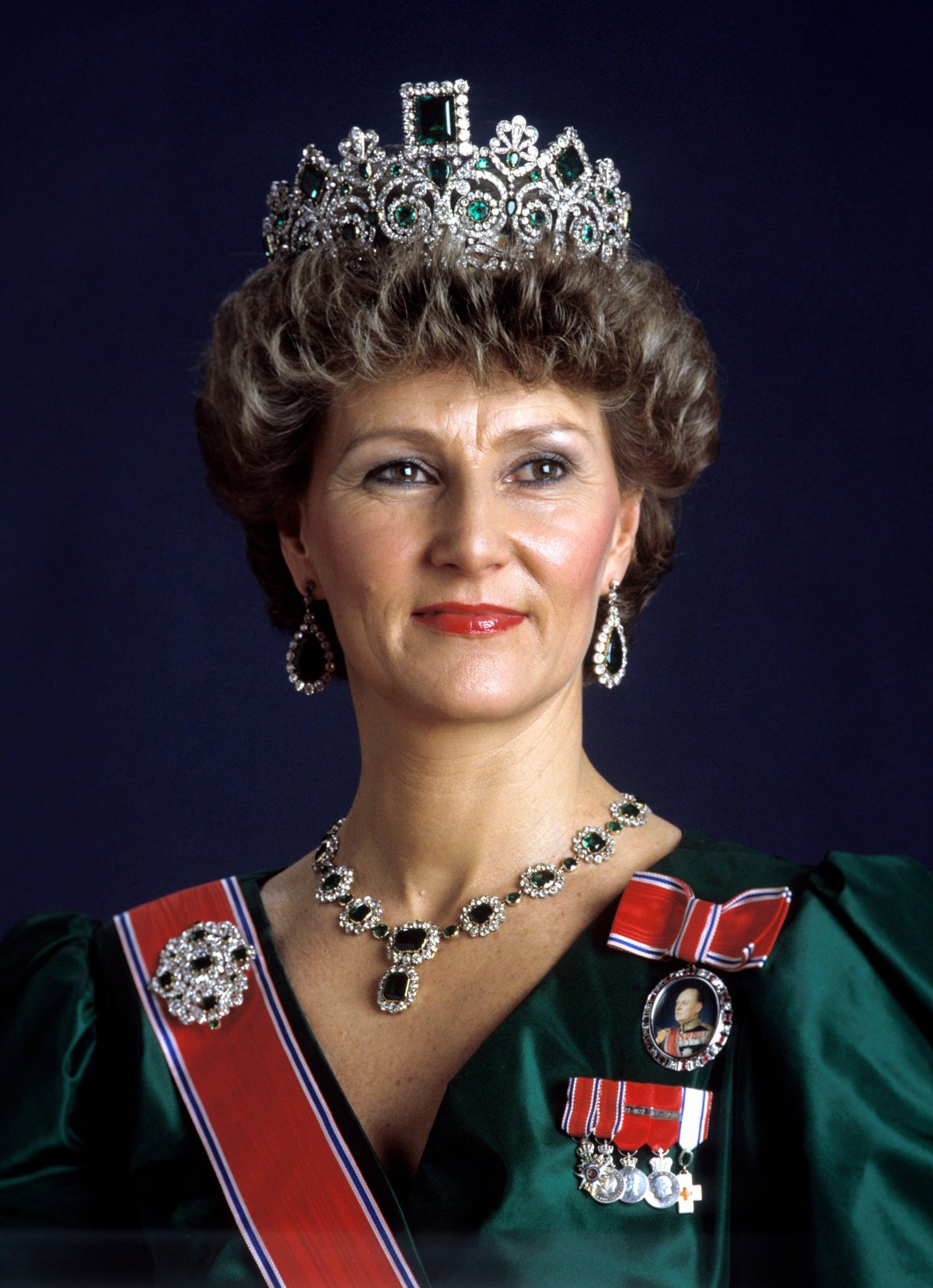
Sonja Haraldsen was born on July 4, 1937. After studying dressmaking and fashion design at school and earning a degree from the University of Oslo, she met Crown Prince Harald, the only son of King Olav V, in 1959. The two embarked on a secret romance. The King was not in favor of his son and heir marrying a commoner, but after nine years with Sonja, Harald put his foot down: either he would be allowed to marry her, or he wouldn’t marry anyone at all, putting the future of the monarchy in jeopardy as a result.
King Olav relented, and Harald and Sonja were married on August 29, 1968. From the start, Crown Princess Sonja was given access to the grandest jewels in the Norwegian collection. Because Harald’s mother had died in 1954, Sonja stepped into the role of “first lady” at the Norwegian court when she became Crown Princess. As a result, she began wearing the jewels largely reserved for Norway’s queens, including the grand diamond and emerald parure, decades before she became Queen of Norway herself.
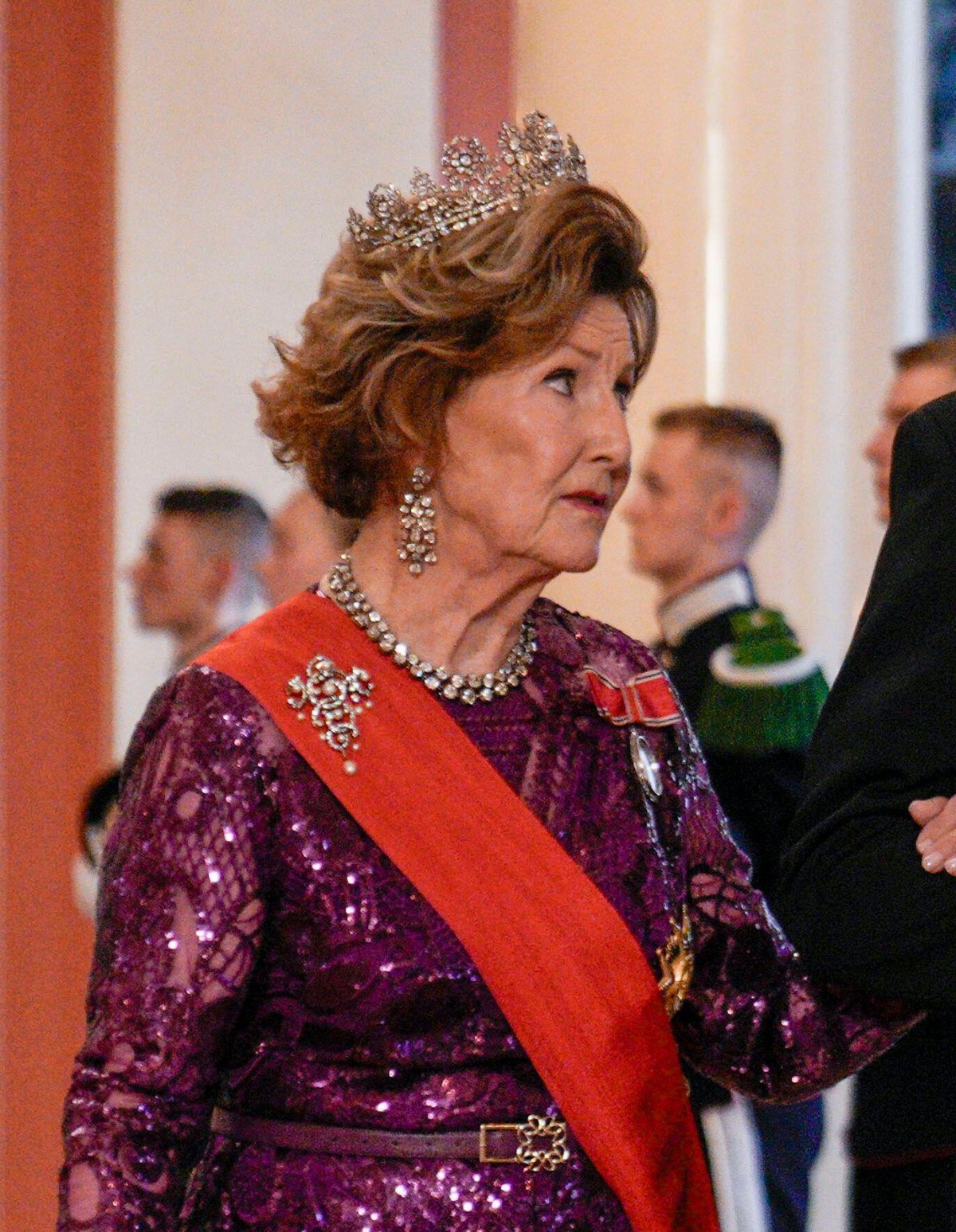
Also placed at her disposal early on was the diamond tiara that once belonged to Queen Josefina of Sweden and Norway. The tiara, which has roots in the imperial jewelry collection of Queen Josefina’s grandmother, Empress Joséphine of France, meandered its way through the Scandinavian royal families before arriving in Oslo just after World War II. Queen Sonja has now been the primary wearer of the tiara for more than half a century. Sonja likes to wear the tiara with a pair of diamond pendant earrings that belonged to Queen Maud’s mother, Queen Alexandra of the United Kingdom.
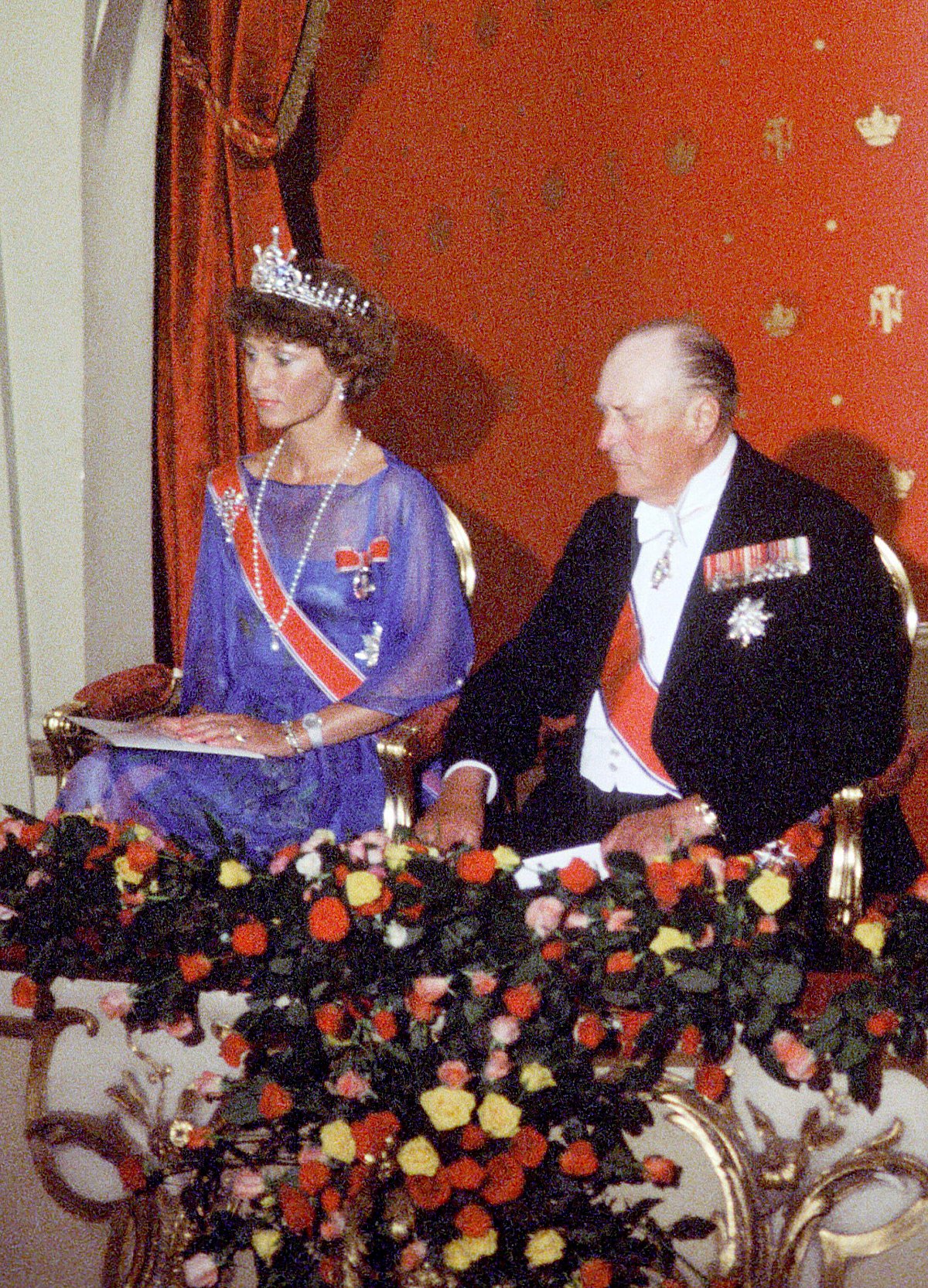
Queen Maud also left her mark on the tiara collection of the Norwegian royal family. Her greatest legacy was probably the elaborate diamond and pearl tiara that she had received as a wedding present from her parents, King Edward VII and Queen Alexandra of the United Kingdom, in 1896. The tiara could be worn both in its full setting and as a smaller pearl fringe tiara. Above, Crown Princess Sonja wears the complete tiara in the summer of 1978.
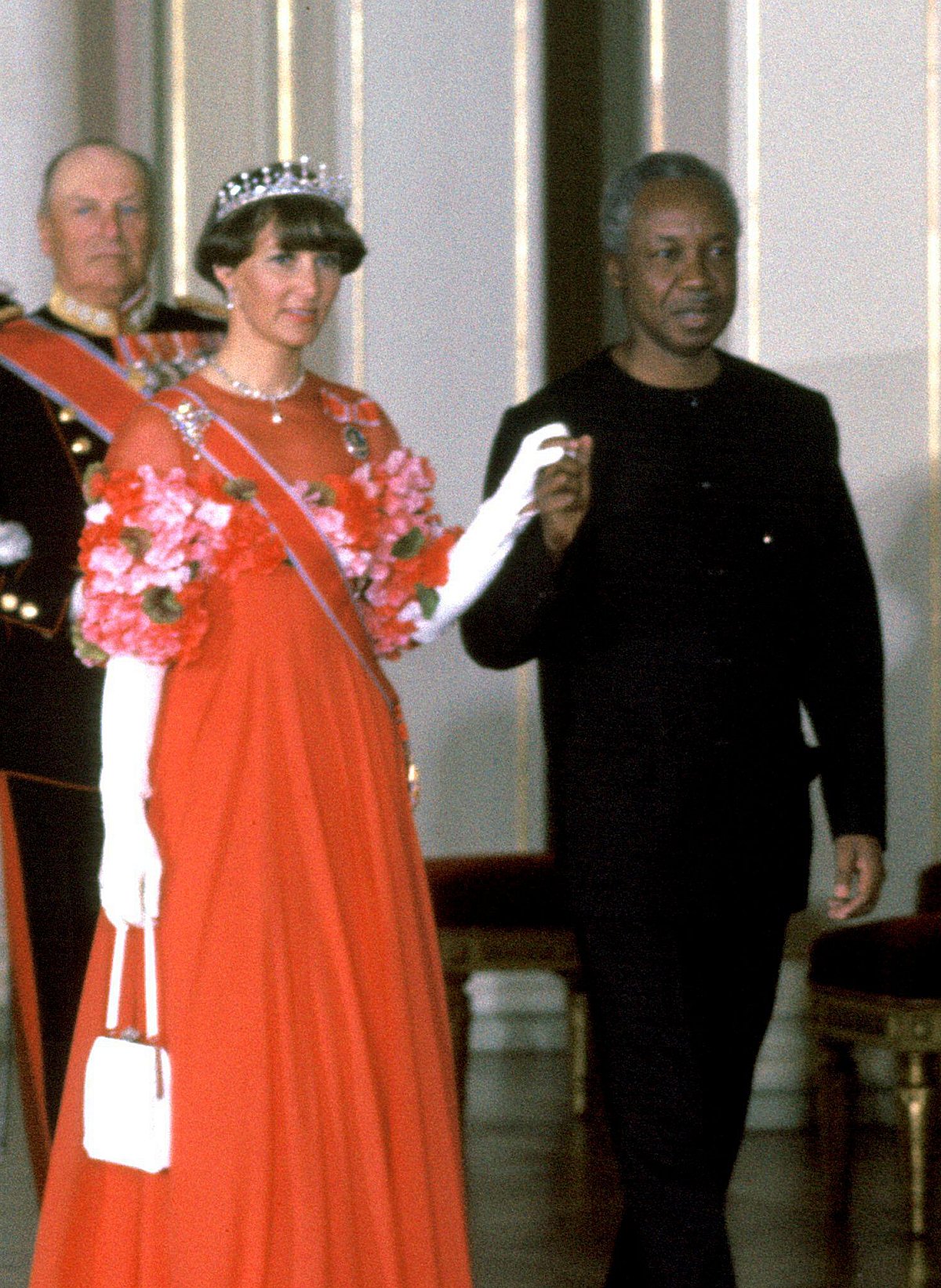
And here, two years earlier in 1976, Crown Princess Sonja wears the smaller setting of the pearl and diamond tiara for a state banquet at the Royal Palace in Oslo in honor of the visiting President of Tanzania.
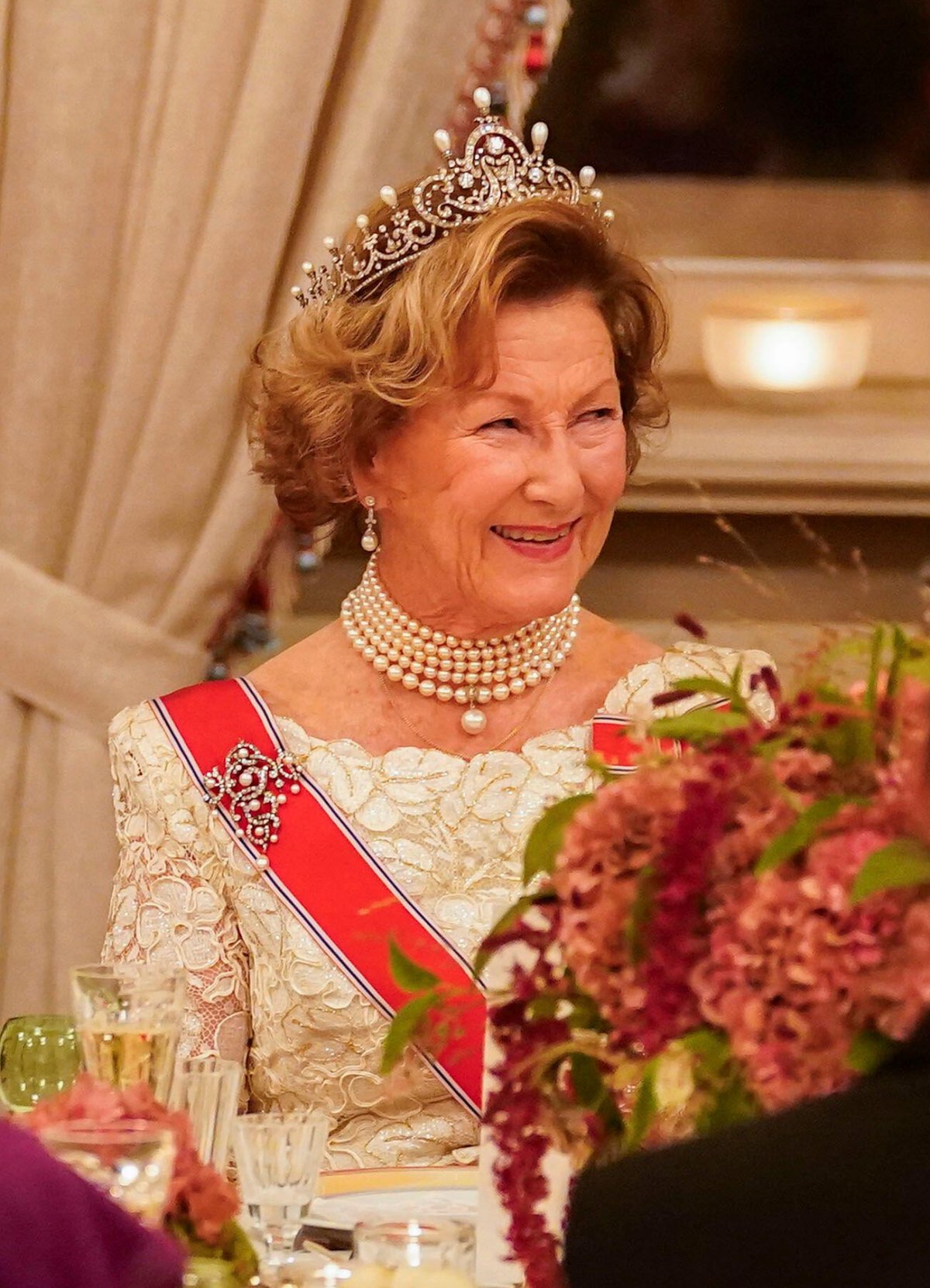
In 1995, Harald and Sonja sent the tiara and other pieces of jewelry to Garrard in London so that they could be cleaned. While they were in the jewelry firm’s custody, the jewels were brazenly stolen in broad daylight, and the pieces were never recovered. Garrard had to work with the family to provide replacements or substitutions for the stolen jewels, and they made a replica of Maud’s pearl and diamond tiara as part of that restitution. That’s the tiara that Queen Sonja wears today.
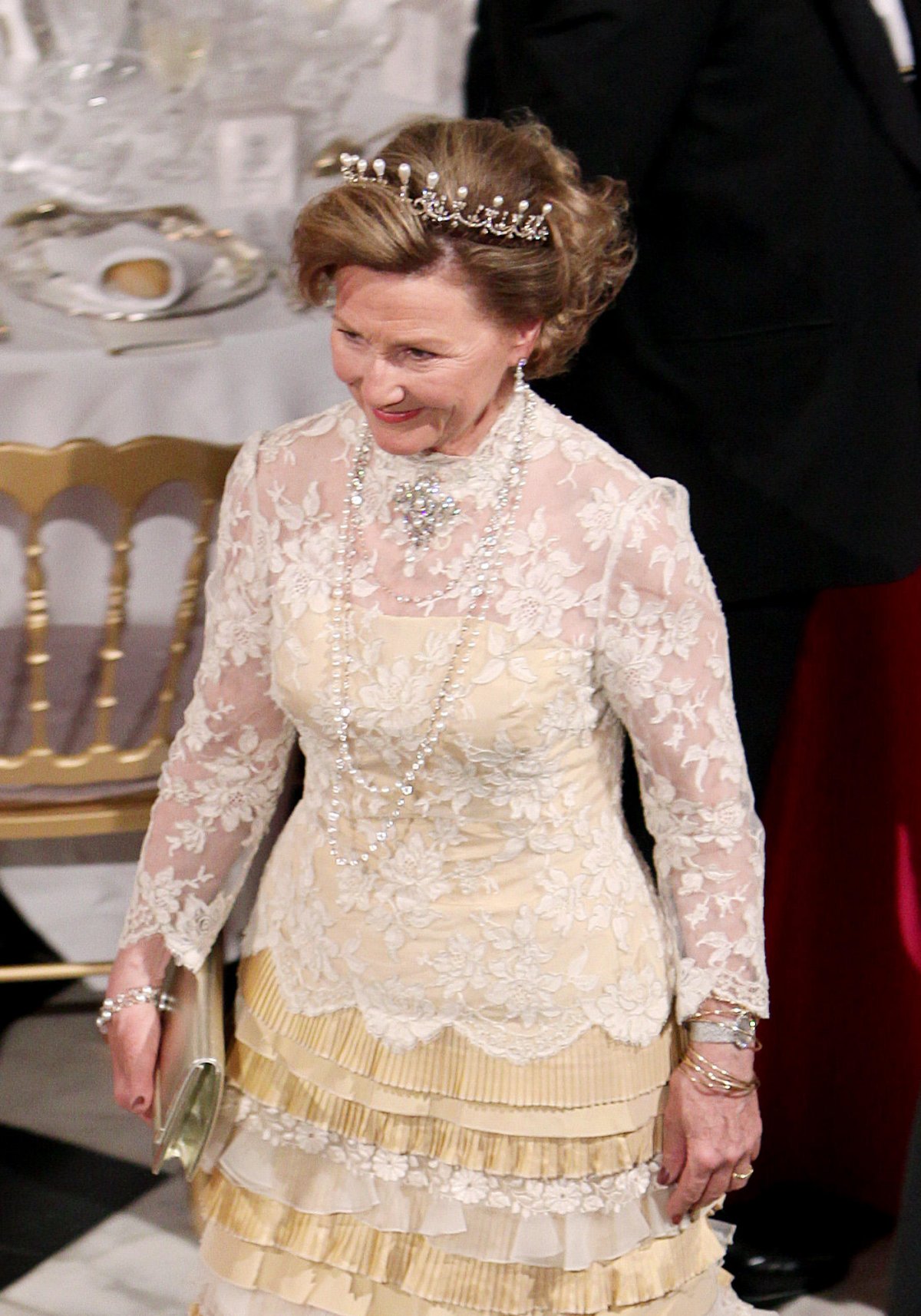
The replica tiara can also be worn in two different settings, just like Maud’s original diamond and pearl tiara. Here, Queen Sonja wears the pearl fringe setting of the replica tiara for a gala in Denmark in 2010.
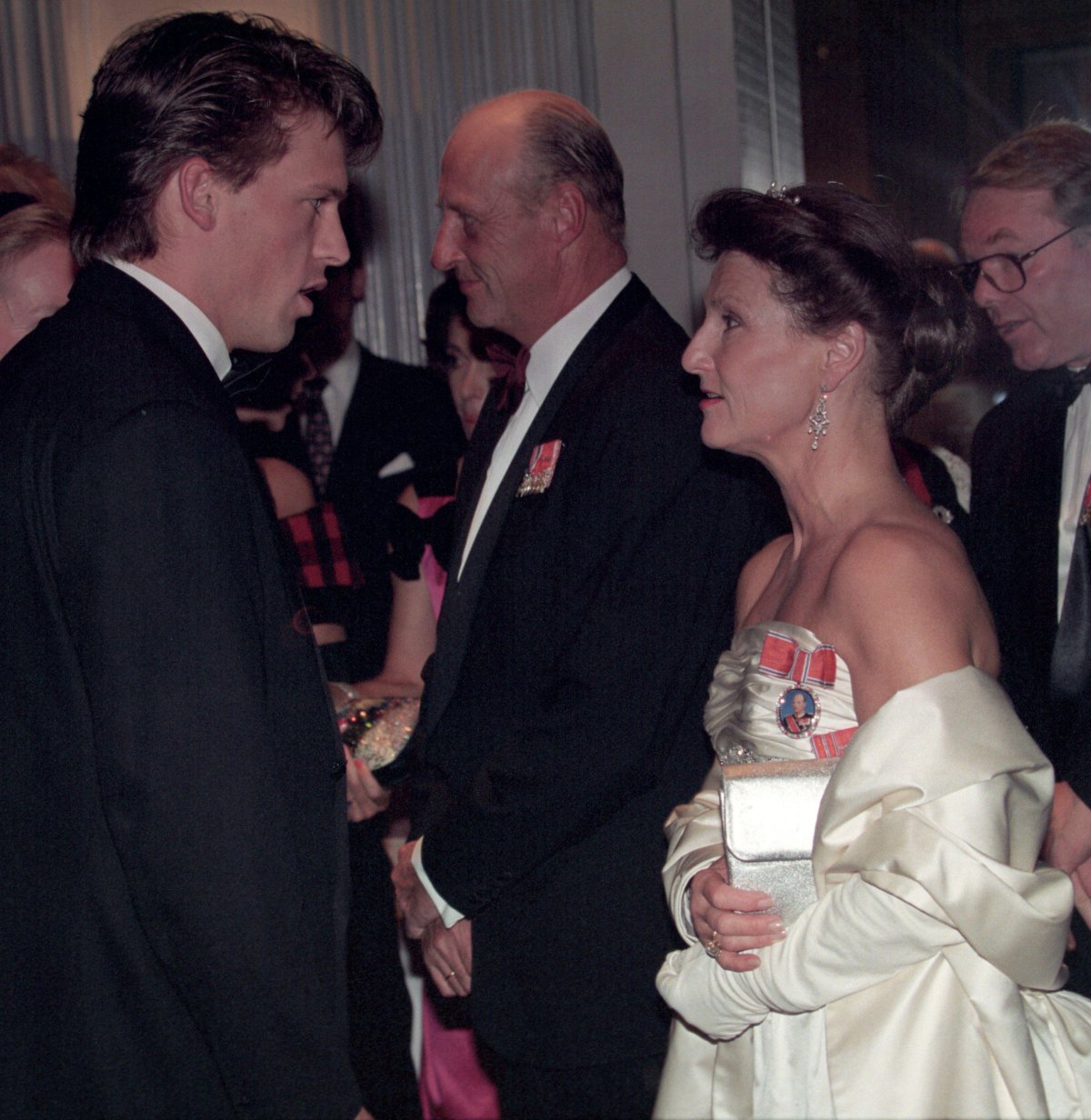
Shortly after the jewelry theft, Queen Sonja wore an unusual tiara during a dinner in New York. In an uncharacteristic move, she borrowed the small tiara that had been given by King Olav to Princess Märtha Louise to wear for a dinner at the Waldorf Astoria Hotel in Manhattan. To my knowledge, this is the only time that Sonja has been photographed in Märtha Louise’s tiara. Given the date of the dinner–October 1995–I’ve wondered whether the loan was a bridge to span the time between the theft of Maud’s pearl tiara and the completion of the replica.
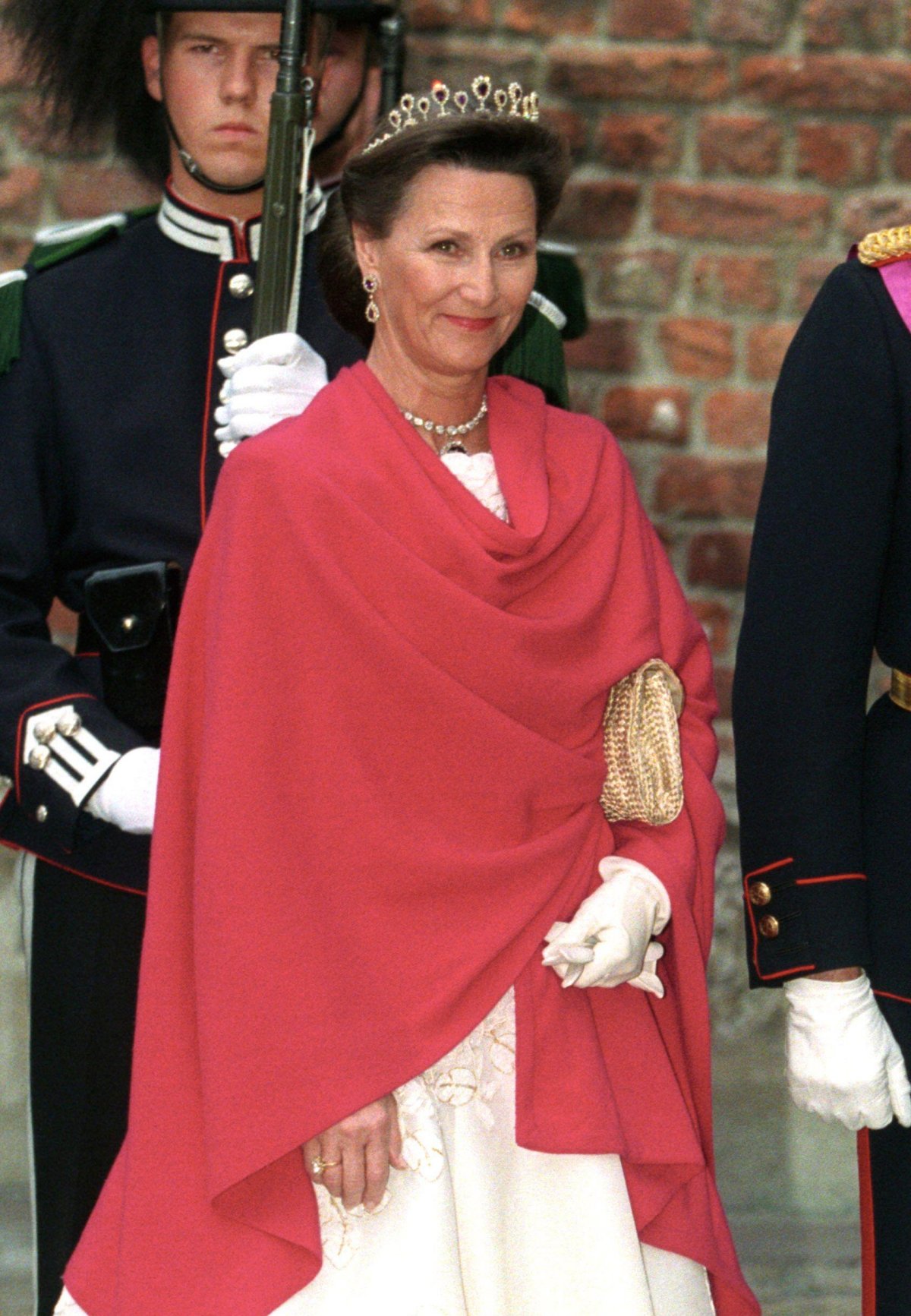
In the years after the tiara theft, Queen Sonja also debuted a brand new suite of jewelry set with diamonds and amethysts, including a convertible necklace that could be worn as a tiara. Isaksen posits that the amethyst parure was acquired with the insurance money paid out after the robbery. Queen Sonja only wore the amethysts a handful of times before eventually making them available to her daughter-in-law, Crown Princess Mette-Marit, and her daughter, Princess Märtha Louise.
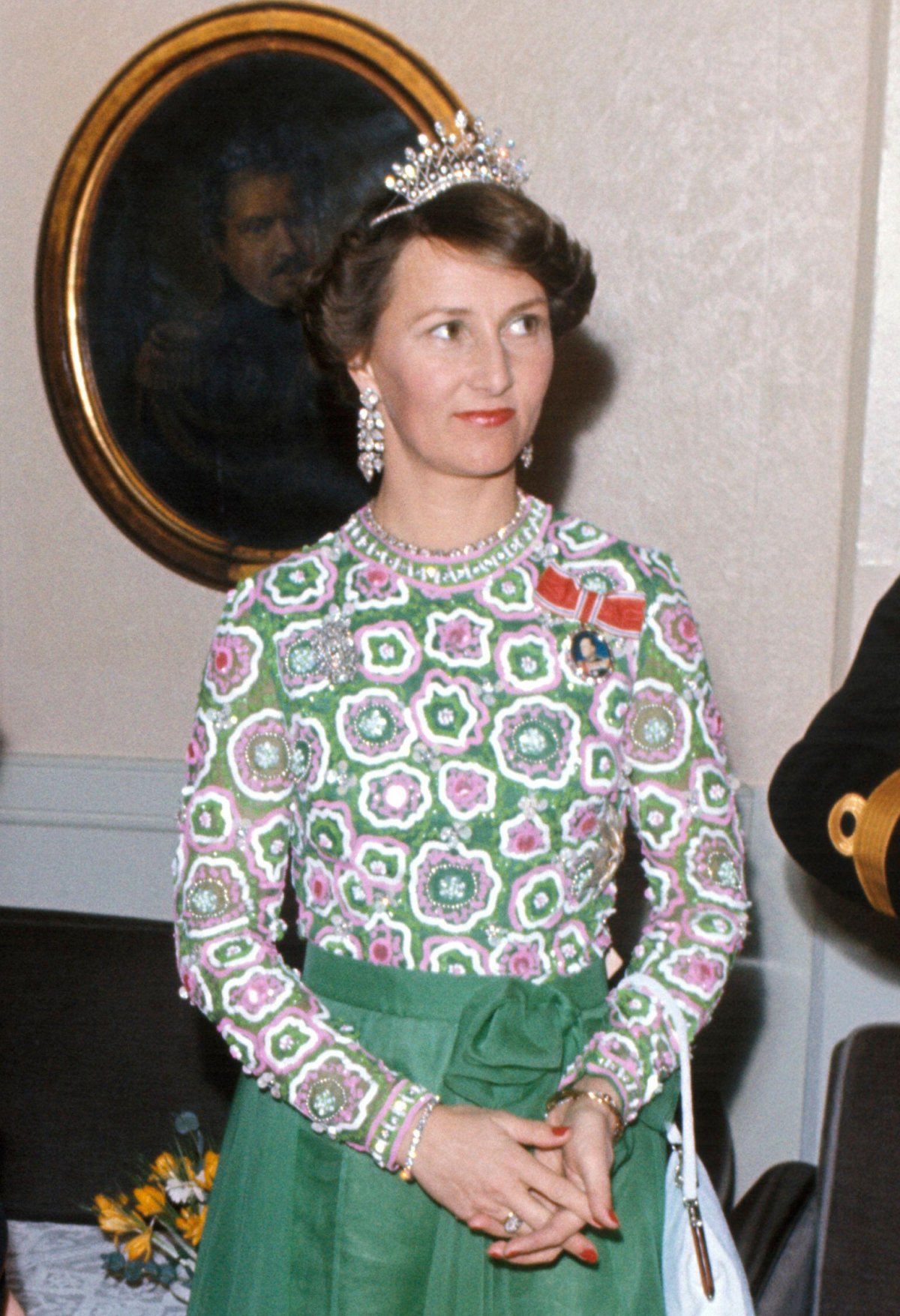
There are other small tiaras in the royal vaults that Sonja has also shared with her daughter and daughter-in-law. Both she and Crown Princess Mette-Marit have worn the Vifte Tiara, a small, fan-shaped diamond tiara that was also one of Queen Maud’s wedding gifts in 1896.
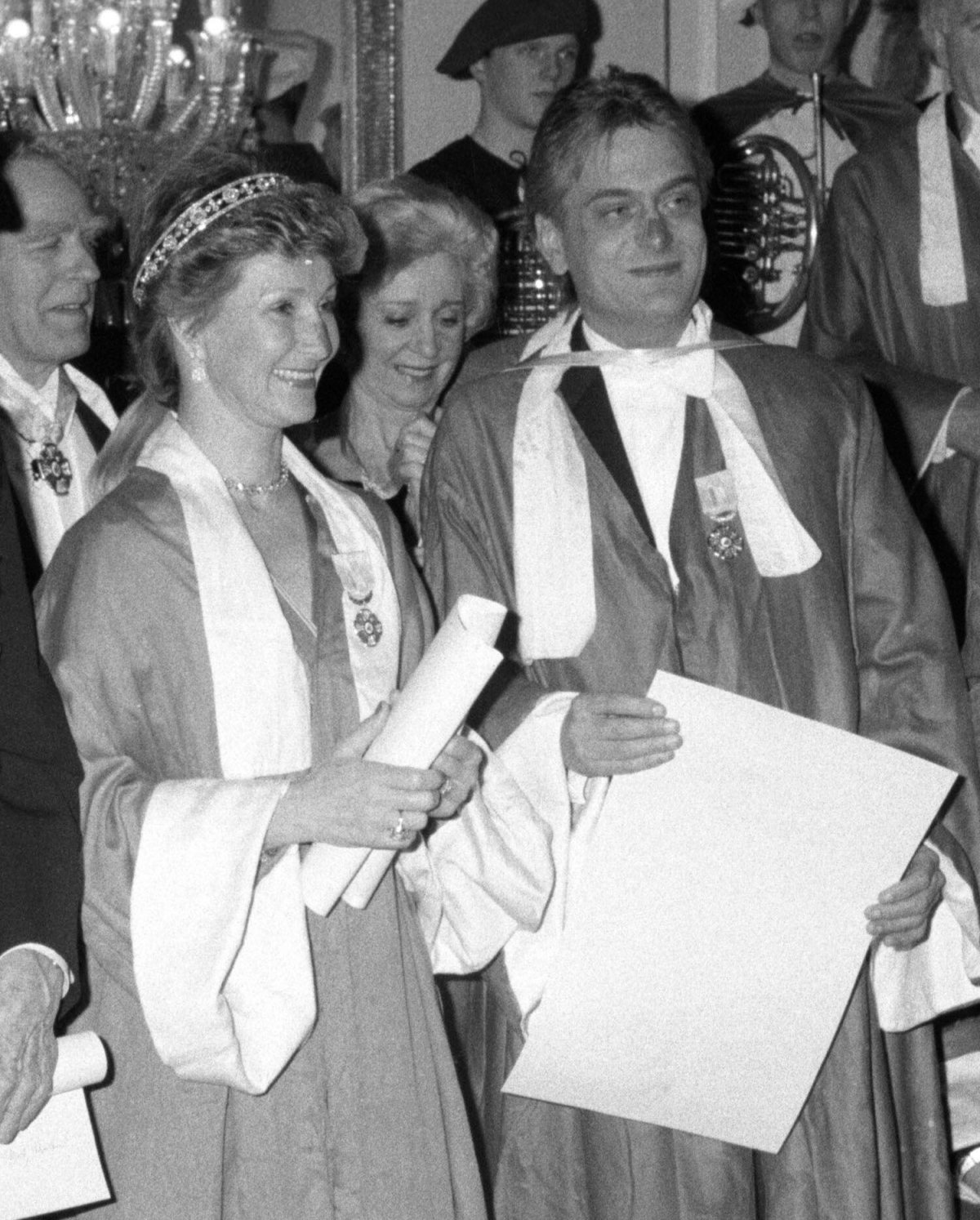
Both Queen Sonja and Princess Märtha Louise have also worn Queen Maud’s Maltese Circlet, a jewel that began its life as a crown commissioned for Queen Maud’s mother, Queen Alexandra. Both Sonja and Märtha Louise have worn the base of the circlet as a bandeau-style tiara.
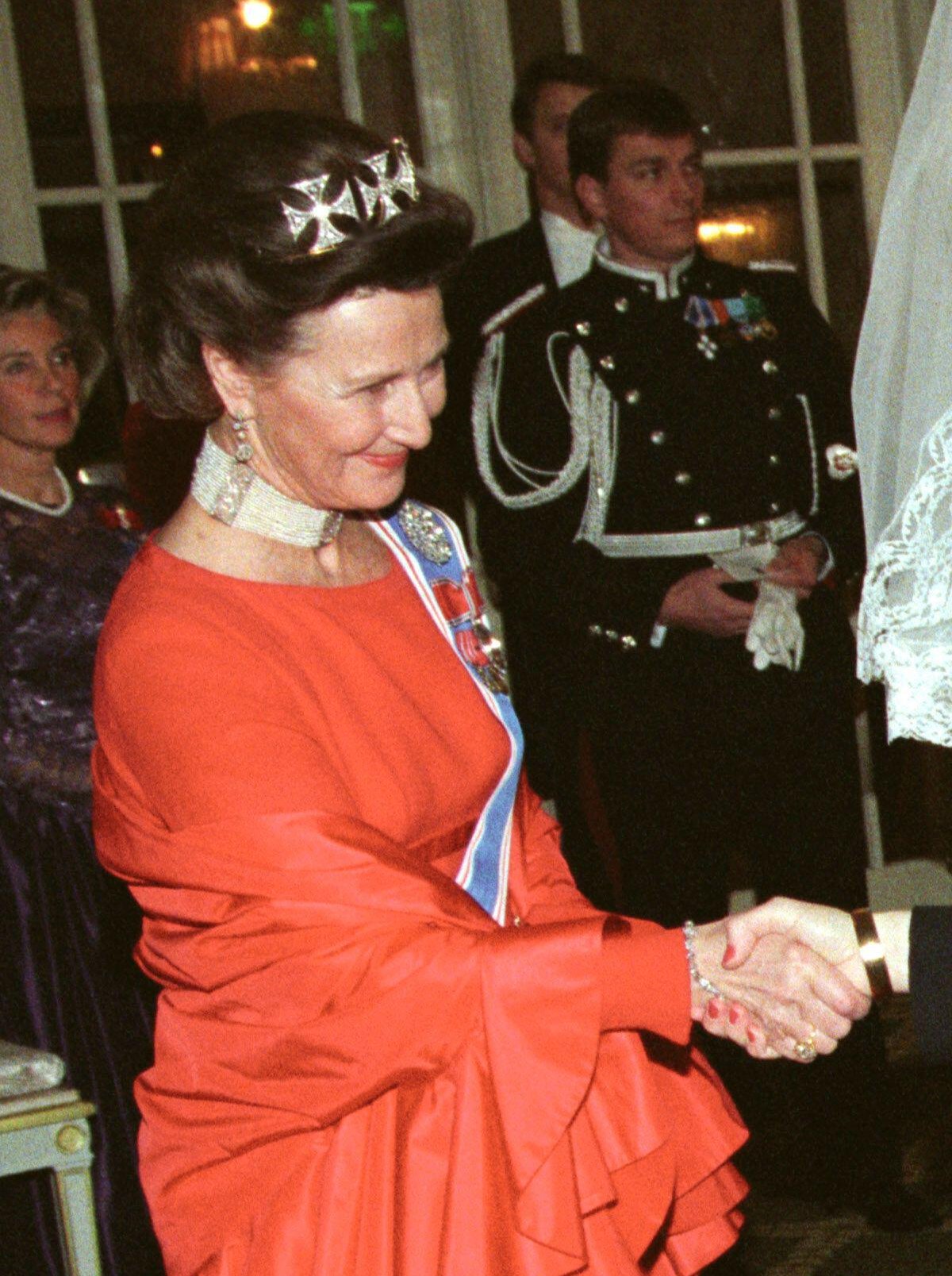
The circlet can also be worn with a set of Maltese cross toppers, which were part of Queen Alexandra’s original crown. Here, Queen Sonja wears the crosses separately on a slim gold tiara frame.
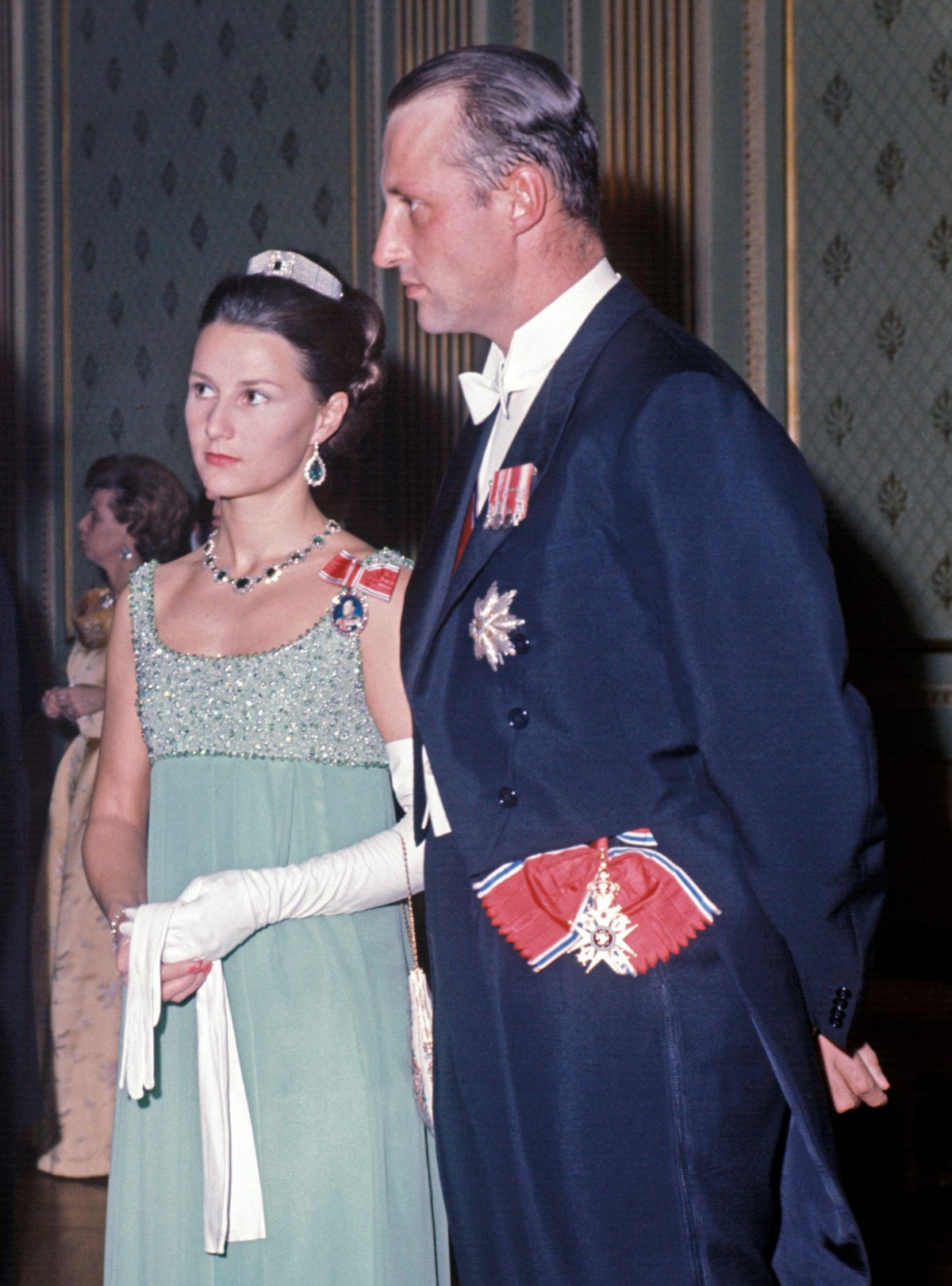
As a young woman, Crown Princess Sonja also innovated with another family jewel: a pearl choker necklace with an emerald and diamond clasp, from the collection of her late mother-in-law, Crown Princess Märtha. The jewel was given to Märtha in 1949 when she christened the Oslofjord, a Norwegian America Line ship. Above, Crown Princess Sonja wears the Oslofjord Necklace as a tiara for a banquet in Oslo shortly after the royal wedding in 1968.
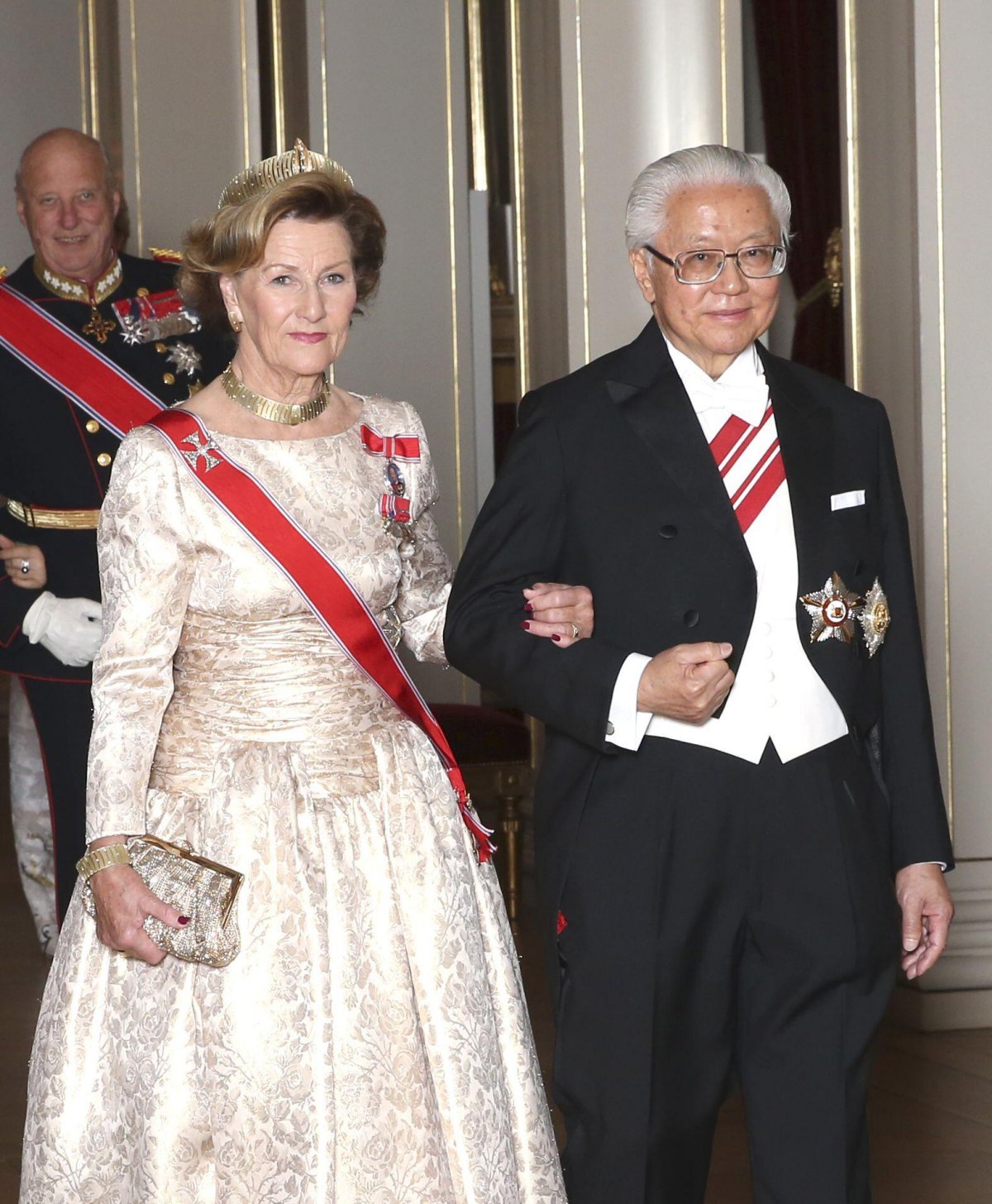
Queen Sonja has also left her unique mark on the Norwegian tiara collection. In 1997, she and King Harald commissioned Norwegian jewelry designer Millie Behrens to make her a new, modern tiara. The gold and diamond diadem was a 60th birthday present to Sonja from Harald, and it was completed in 1999 with a great deal of input from Sonja herself. Today, it is part of a parure that also includes earrings, a necklace, and a bracelet.
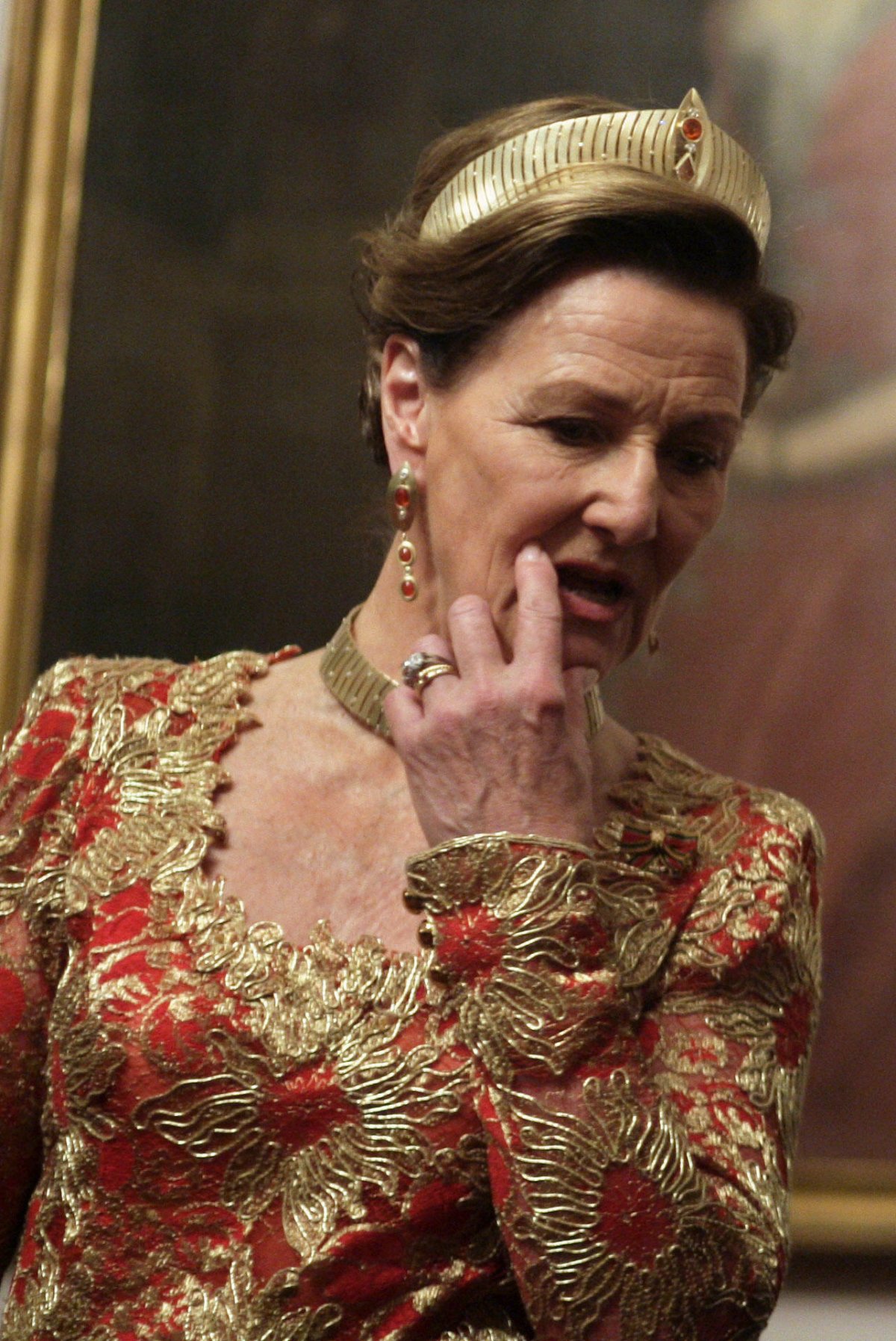
Delightfully, Sonja asked that the tiara be made as a convertible piece, able to be worn with different centerpieces to coordinate with a variety of jewels and clothing. Here, in 2007, she wears the second setting of the tiara for a state banquet in Berlin. This version of the tiara incorporates orange fire opals in its design.
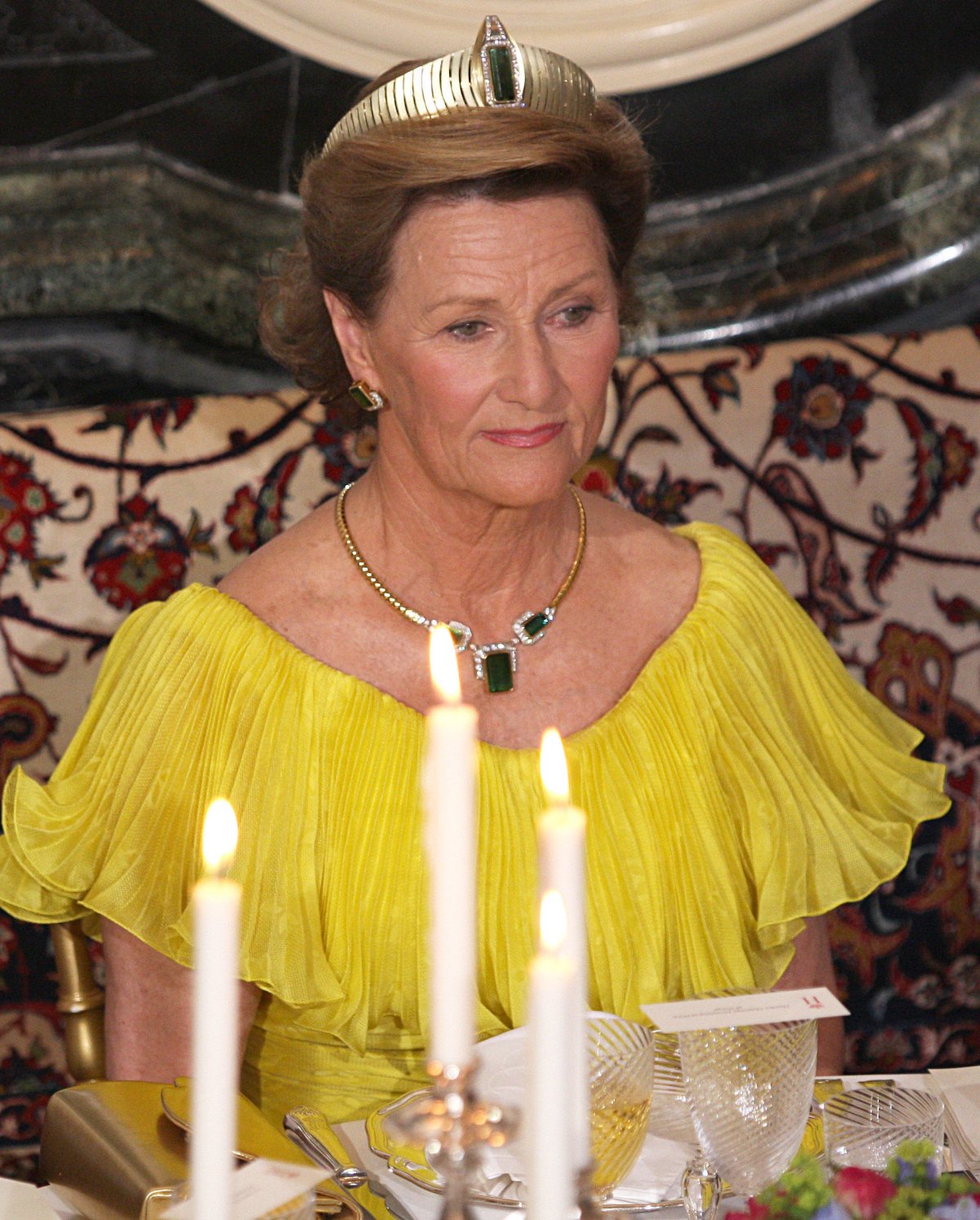
A third centerpiece, made of diamonds and green tourmalines, was also created by Behrens to coordinate with a necklace already in Sonja’s jewelry box. In Ingrid Alexandras Arv, his book on Norway’s royal jewels, Isaksen notes that the tiara made by Millie Behrens is the only Norwegian-made tiara in the royal family’s jewelry collection.
Leave a Reply
You must be logged in to post a comment.